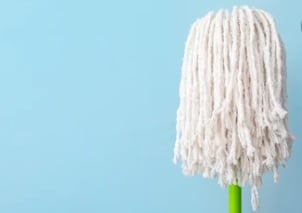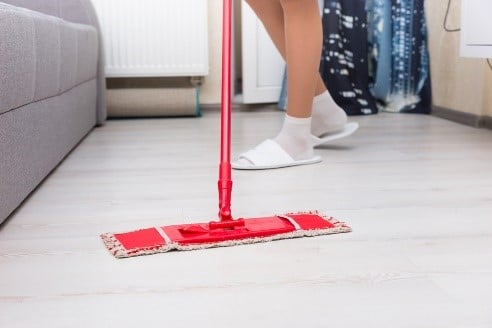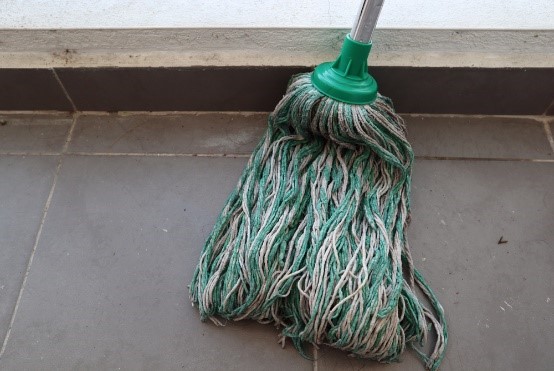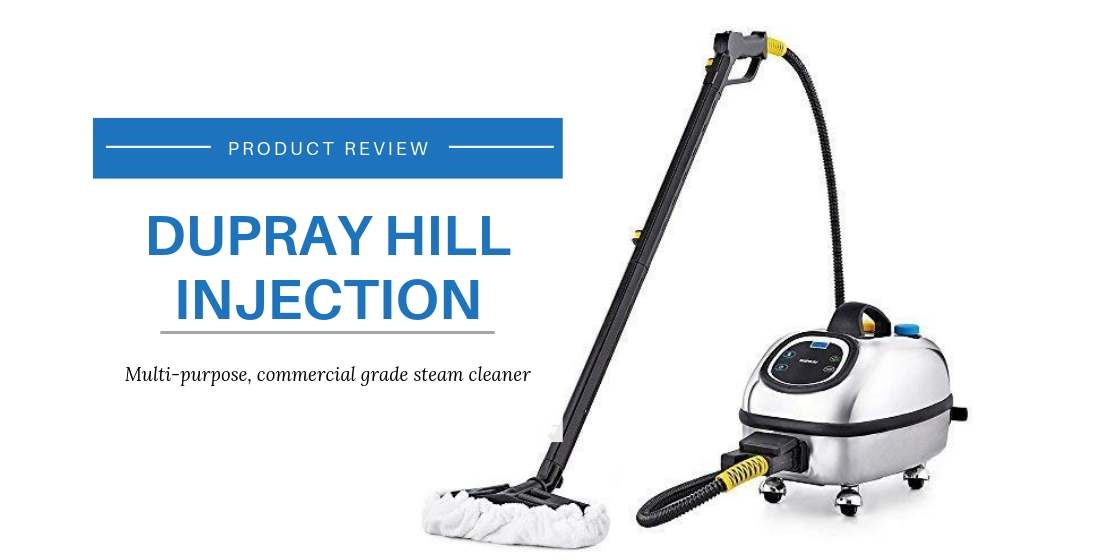 Mops can get filthy – no surprise there. They collect all manner of dirt, germs, and bacteria off the surface of your floors, and guess where all that grimy stuff ends up? That’s right – in your mop.
Mops can get filthy – no surprise there. They collect all manner of dirt, germs, and bacteria off the surface of your floors, and guess where all that grimy stuff ends up? That’s right – in your mop.
If you don’t clean it properly after every mopping session, you’ll spread all that nastiness onto the tiles or wood floor you’re trying to get clean. Here’s our step-by-step guide on how to clean a mop the right way.
Cleaning Mop Heads With a Detachable Microfiber Pad
Mops with detachable cleaning pads are the easiest of the bunch to clean. All you have to do is detach the mop pad or unhinge the mop head from the handle and toss it into the washing machine or dishwasher. If you do use the washing machine to clean it, don’t wash the mop head along with any wearable clothes.
The idea is to minimize the spread of dirt, germs, and bacteria, so it would be counterintuitive to add other garments to the wash. Sponge mop heads are best washed in the dishwasher instead.
Using the Washing Machine – Steps
- Detach the mop pad to separate it from the base plate and throw it into the washing machine
- Add one cup of bleach and run a hot cycle to sanitize it
- Once the cycle is complete, take it out and let it air dry, preferably in the sun
Using the Dishwasher – Steps
- Detach the cleaning pad from the baseplate or unhinge the sponge mop head to separate it from the mop handle and place it into the dishwasher
- Add one cup of bleach and let the cycle run
- Once it’s done, take it out of the dishwasher and let it air dry
Whatever you do, don’t wash the mop head along with dirty dishes.
Cleaning a Mop With a Non-Detachable Head
The only way to clean a steam mop or wet mop with a non-detachable head is to do it manually. One way would be to use a concentrated solution of hot water and vinegar to get it clean. Given how mild the antiseptic properties of vinegar are, we recommend using bleach to completely eradicate germs, bacteria, and other microbes that might be present in the microfibers or string mop. Besides, it is quite effective in keeping the mop odor-free.
Steps:
- Mix one gallon of hot water with half a cup of bleach or 2 cups of white vinegar in a mop bucket
- Dip the mop head into the cleaning solution and let it sit for 15 minutes
- Take it out, wring it to remove excess water, and leave it to air-dry
Don’t leave it soaked in the solution for more than 12 hours to avoid the re-growth of bacteria and the weakening of the cleaning fibers.
How to Clean a Dry Mop

While you don’t have to wash your microfiber mop after every use, you should at least ensure that you shake out the dirt outdoors, preferably over a garbage can, before storing it. With that in mind, always make a point to wash your dust mop after every three to four uses to get rid of dirt and bacteria build-up.
Using the Vacuum Cleaner
- Detach the hose attachment from the vacuum unit
- Turn the machine on and run the hose over the microfiber mop head to suck up all the dirt and particles
- Once you’ve done this for about a minute, it should be clean for the next use
Using the Washing Machine
- Shake off any excess dirt from the mop head and then place it into the washing machine
- Add laundry detergent and run a warm cycle (not hot)
- Once it’s clean, let it air-dry outside or, if you must, place it in the dryer on the lowest heat setting to avoid damaging the delicate microfibers
Using the Dishwasher
- Shake off excess dirt and particles from the mop head and then place it into the dishwasher
- Add dish soap and run a warm cycle
- Once it’s clean, leave it out to air-dry in the sun
Handwashing the Mop
- Fill the mop bucket with warm water and add dish soap or mild detergent
- Dip the mop head into the soapy water and let it soak for 10 minutes
- Gently rub the surface with your hands to get the dirt and particles out
- Pour out the dirty water and replace it with warm, clean water
- Rinse out the mop head, wring it to remove excess water, and let it air-dry
Mop Maintenance Tips to Extend Mop Head Life

In addition to cleaning your mop, here are some additional tips you can use to keep it in pristine condition.
Rinse After Every Use
If you don’t have the time to deep clean your mop in the washing machine or dishwasher, ensure – at the very least – that you rinse out all traces of dirt and floor cleaner detergent before leaving it out to air-dry. Cleaning product build-up can damage your mop fibers in the long run.
Know When to Replace the Mop Head
Once mildew starts to form on your mop, it’s time to get rid of it. Using a mildew-covered mop to clean spreads bacteria and foul odor around your home. As a rule of thumb, you should replace your mop every three months or sooner if it looks grimy. The last thing you want is for your mop to turn into a cleaning hazard.
Store Your Mop Properly
Yes, there’s a right way and a wrong way to store your deep clean mop. Never store your mop before it has fully dried. A damp mop promotes the overgrowth of bacteria. Leave it out to air-dry, preferably in the sun, to kill bacteria and hang it high enough to prevent the fibers from touching the ground.
Bottom Line
Using a clean mop in your household cleaning routine not only ensures that you get all the dirt and grime from any tile floor, laminate floor, or hardwood floor; it also minimizes the spread of germs and bacteria that would otherwise have a field day in the fibers of a dirty mop.
Speaking of germs and bacteria, do you need help keeping your toilet bowl clean? Check out our top picks for the best toilet bowl cleaners on the market right now.
